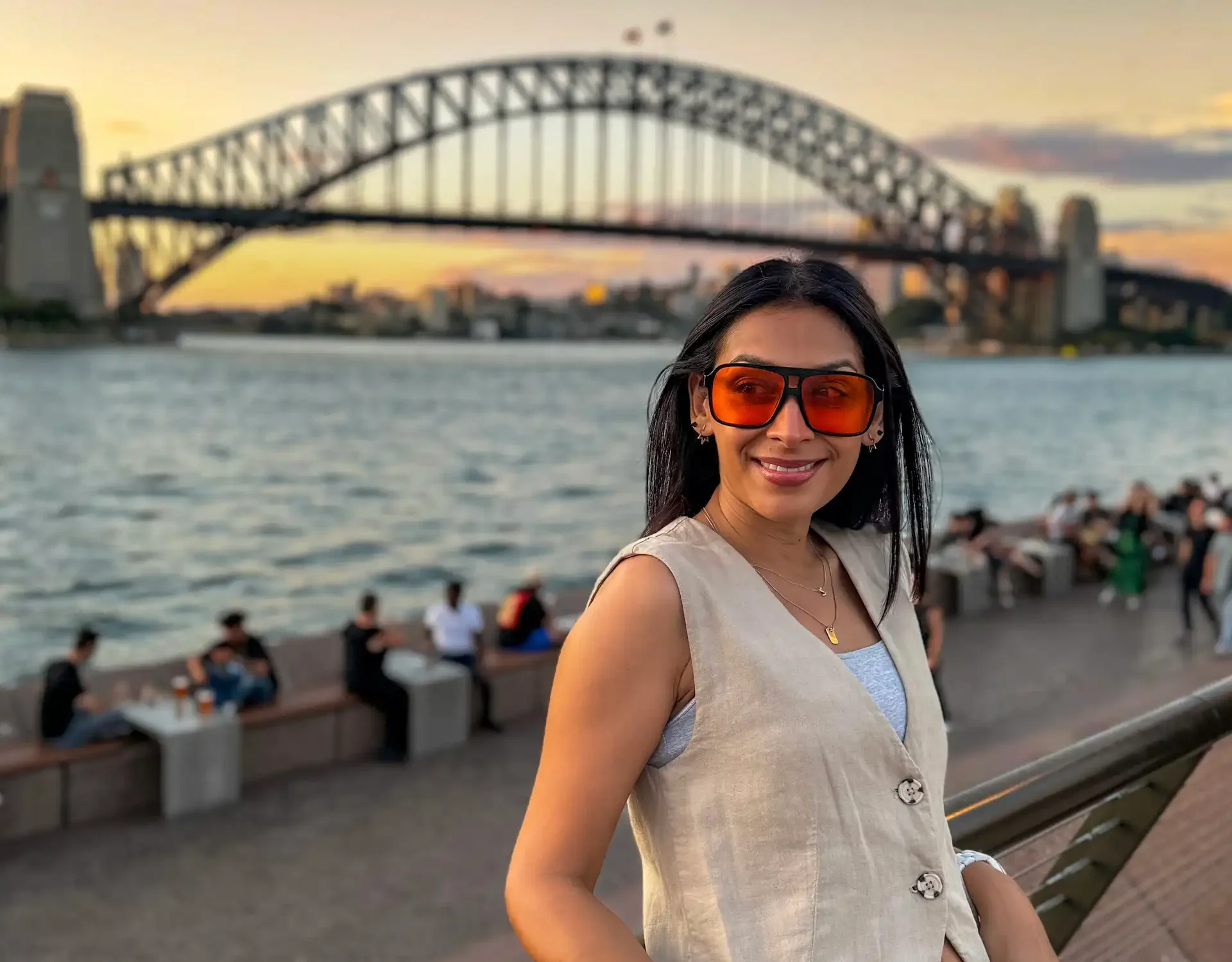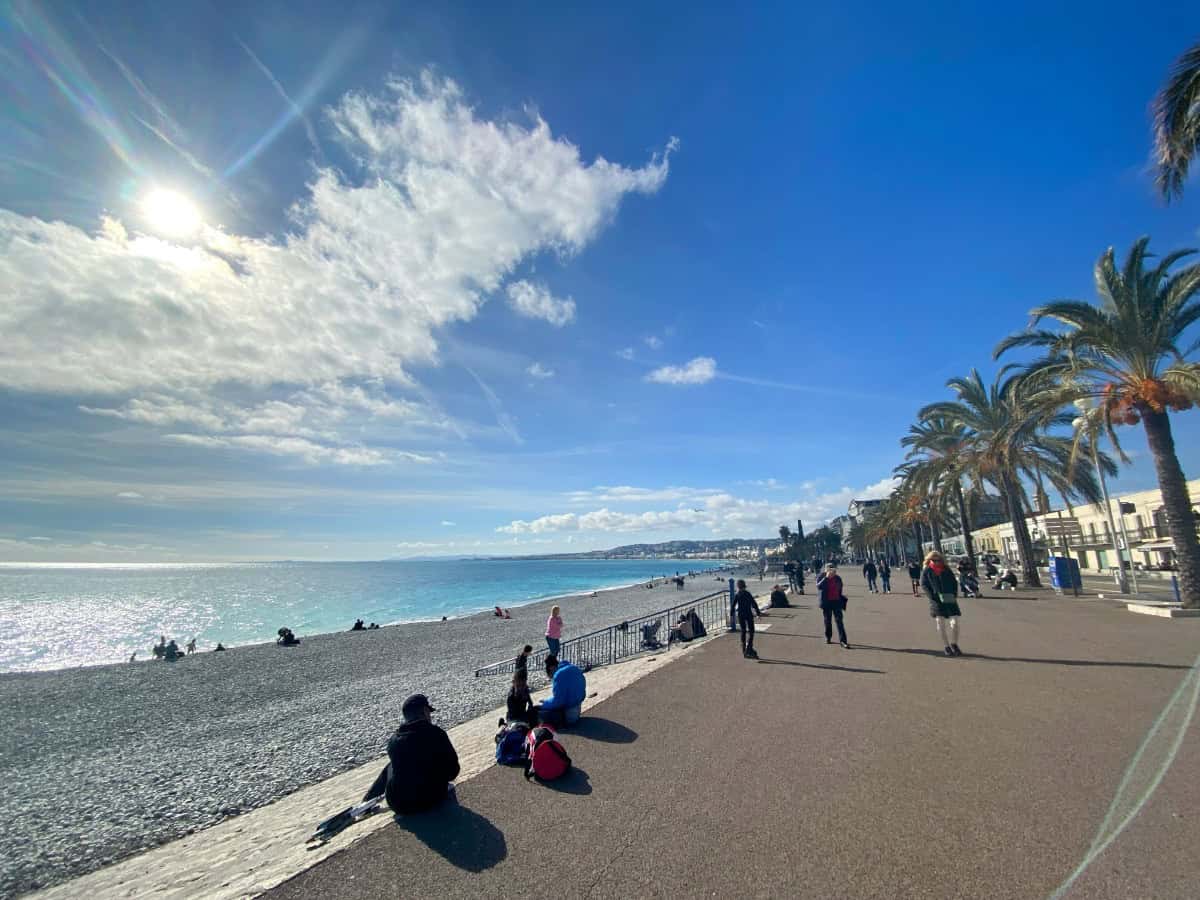
Sydney is famous for its iconic landmarks like the Sydney Opera House and Sydney Harbour Bridge. Add to that a string of stunning beaches, beautiful parks, nature reserves and a bustling harbour.
There’s so much to see and do in Sydney that you might not know where to start. I’ve compiled some of my trip highlights to help you plan your own Sydney itinerary. Let’s explore the best things to do in Sydney, Australia, for an unforgettable visit.
Looking for more vibrant cities down under? Explore my guide to the best things to do in Melbourne.
How to Get to Sydney, Australia

There are no direct flights to Australia from the UK, but there are plenty of one-stop routes with short layovers. I departed from London Heathrow and had a quick layover in Singapore before heading to Sydney.
The journey lasts around 25 hours, depending on your route or airline. I was lucky enough to fly business class with Qantas. The 2-metre business suite, welcome bubbles and lie-flat seats certainly helped make the journey more comfortable.
Top Things to See & Do in Sydney
This city has something for everyone, including family-friendly activities. Explore some of my top things to do in Sydney for a memorable trip.
Visit the Sydney Opera House

When in Sydney, one has to visit its UNESCO World Heritage-listed opera house — one of the top sights to see in Australia. This architectural gem took nearly 15 years to complete, and stands as an engineering marvel overlooking the harbour.
The opera house hosts up to 40 shows a week, ranging from ballet and opera to symphony orchestra and live music performances. So you’re sure to find a show you’ll look forward to.
If you’re curious about the inner workings of the opera house, consider a guided tour. You’ll learn about its design and construction and over 50 years of history. You might even catch a rehearsal in action.
Explore Sydney Harbour

Stretching about 19 kilometres long, Sydney Harbour is the world’s largest natural harbour. This bustling area is home to Circular Quay, a key ferry terminal surrounded by attractions, restaurants and bars.
It’s the perfect place to stretch your legs, people watch or grab a cocktail. If you’re looking for some adventure, the harbour has plenty on offer.
Climb the Sydney Harbour Bridge

If you’re seeking adrenaline-fuelled fun in Sydney, why not climb one of the world’s largest steel-arch bridges? Built in 1932, the Sydney Harbour Bridge spans about a kilometre long and consists of over 53,000 tonnes of steel.
With 360° harbour views waiting at the top, this may just be one of the most rewarding tourist activities in Sydney. There are climbs for various levels and times of the day. I climbed the bridge at dusk and enjoyed glittering vistas of the harbour at nightfall.
Tip: Travelling on a budget? Catch equally breathtaking views from the bridge on a walk or bicycle ride across.
Take a Ferry to Manly


Offering a budget-friendly way to see the harbour and explore beyond, a ferry to Manly is one of Sydney’s most iconic experiences. Tickets cost around $8 and trips last between 20–30 minutes, passing the Sydney Opera House and Harbour Bridge.
Manly has a popular slogan that goes “Seven miles from Sydney and a thousand miles from care.” Kayak, surf, swim or soak up the rays with an Aperol in hand. It’s all about leisure here.
There are plenty of beaches to plop down at. Shelly Beach is a local favourite, ideal for snorkelling and scuba diving. Time your ferry back to Sydney Harbour right, and you’ll get to enter the harbour as the sun slips away.
Get to Know The Rocks


Best known for its unique laneways, cobblestoned streets and historic pubs, The Rocks is a must-visit area near Sydney Harbour. It is the oldest area in the city, originally home to the Cadigal people of the Eora Nation.
The area didn’t always have a great reputation, with convicts and gangs inhabiting it. However, it has evolved into a culturally rich hotspot filled with energy and must-visit attractions.
- Learn about the area’s Indigenous and colonial history at The Rocks Discovery Museum
- Grab a drink at some of Sydney’s oldest pubs — including The Lord Nelson Brewery Hotel (1841), The Fortune of War (1828) and The Glenmore (1921)
- Explore The Rocks’ weekend markets to support local artists and makers
- Discover the area’s history with a guided walking tour of The Rocks
- Explore the history of working-class domestic life in Sydney at the Susannah Place Museum
Go Shopping in The QVB (Queen Victoria Building)
Australia boasts some of the most beautiful shopping arcades, and the Queen Victoria Building is an excellent example. This shopping arcade was built in 1898 and spans an entire city block. It is home to over 180 shops and restaurants, including quaint boutiques and bustling cafes.
While you’re there, admire the grand central glass dome, mosaiced floors and stained glass windows. You’ll also notice two mechanical Royal Clocks suspended from the ceiling. Each clock features dioramas of English royal history, including a replica of Big Ben chimes.
Visit the Museum of Contemporary Art

Also located in The Rocks, the Sydney Museum of Contemporary Art showcases over 4,000 works by Australian and international artists. It is one of the best things to see in Sydney for art fanatics.
The museum emphasises highlighting indigenous artists through its permanent and special exhibitions. Notable artists featured here include Vernon Ah Kee, Fiona Foley and Tracey Moffatt.
Explore the various collections, peruse the MCA store for a souvenir, or head to the rooftop Canvas restaurant. This eatery offers harbour views and creative plates prepared by a seasonal Chef-in-Residence.
Visit the Koala Park Sanctuary


The family-owned Koala Park Sanctuary is about a 30-minute drive from the Sydney CBD. Established in 1930, it is one of Australia’s oldest private wildlife parks.
The park has an on-site hospital and houses various rescued and rehabilitated native species, including koalas, wombats, emus, dingoes and kangaroos. You’ll encounter free-roaming wallabies and kangaroos, and can even greet and pet a koala. I was delighted to spot a red-necked wallaby with its adorable joey.
Explore Darling Harbour

While most people are familiar with Circular Quay, Darling Harbour is equally stunning and entertaining. In fact, it’s the perfect destination for a fun-filled family adventure.
- Visit the SEA LIFE Sydney Aquarium to get up close with Australia’s oceanic inhabitants.
- If maritime history intrigues you, head to the Australian National Maritime Museum
- Meet Tasmanian devils, kangaroos and koalas at the WILD LIFE Sydney Zoo
- Take a tranquil stroll through the Chinese Garden of Friendship to admire ponds, flora and beautiful pavilions
Get Curious at the Royal Botanic Garden


Spanning over 30 hectares, the Royal Botanic Garden offers a tranquil escape perfect for morning walks or fun picnics. Established in 1816, it is Australia’s oldest botanic garden and a treasure trove of over 27,000 plants.
The garden is free to enter, and you can look forward to fountains, statues and stunning harbour views. The Royal Botanic Gardens hosts walking tours and workshops, allowing you to learn more about the local plants and Aboriginal heritage. Alternatively, you can simply plop down with a picnic basket and soak up the views of the Opera House and Harbour Bridge.
Visit the Iconic Bondi Beach


A trip to Bondi Beach is one of the most popular things to do in Sydney. Located about a 15-minute drive from the CBD, this beach is a go-to for locals and tourists alike. Bondi Beach boasts about a kilometre of golden sands and exquisite surf.
Take a surfing lesson, soak up the sun, cool down with an ocean dip and head to the Art Deco Bondi Pavilion for a bite. The popular Cafe Bondi is just up the road from the beach and a great choice for a healthy brunch.
Do the Bondi Coastal Walk


Grab your camera and walking shoes. The 6-kilometre Bondi to Coogee Coastal Walk passes postcard-worthy beaches, rock pools and the ocean-fed Bondi Icebergs swimming pool.
Walking the trail takes around 2–3 hours, and the path is well-maintained. If you’re looking for a shorter path, opt for the roughly 4-kilometre Bronte Baths to Bondi walk. The Bronte Baths offer dramatic ocean views and are safe for swimming.
If you time your visit between October and November, you’ll get to see the annual Sculpture by the Sea exhibition. This event transforms the walk into a dreamy sculpture park.
Head to Mosman
Mosman sits about 25 minutes from the CBD on Sydney’s North Shore. This harbourside suburb features leafy streets and stunning heritage homes and enjoys close proximity to some of the most beautiful beaches.
I headed to Balmoral Beach, which is quieter than Bondi Beach and features a boardwalk, shark net and grassy picnic spots. It’s the perfect place if you’re travelling with the kiddos.
Stop by the Boathouse overlooking Balmoral beach for lunch or a few cocktails. Or grab some fish and chips to go at Bottom of the Harbour Seafoods.
See Sydney from the Sky


For the extra-adventurous, a helicopter tour of Sydney might be just your thing. We booked a last-minute helicopter ride just a few hours before our flight home — and had no regrets.
Our tour with Blue Sky Helicopters departed from Sydney Airport’s heliport. The flight offers a new perspective of city highlights like the Sydney Opera House, Manly and Bondi Beach. Flights last between 20–60 minutes and include live commentary on Sydney’s history and landmarks.
Final Thoughts: What to Do in Sydney

As you can see, there is no shortage of fun stuff to do in Sydney, Australia. Whether you’re an adventurer, a history buff, or simply seeking a tranquil escape, this city delivers. It is sure to steal your heart as it did mine.
While planning your trip, take a look at my travel resources. I’ve compiled all the trusted platforms and tools I use to plan my getaways. And if you’re looking for more family-friendly locations in the south, consider a trip to Cape Town, South Africa.
Please visit our sponsor:
Our Sponsor
